- The Government’s earlier start-stop approach to electric vehicle (EV) adoption for more than a decade had left some industry players, prospective buyers wondering about its future here
- As recently as August 2019, then Environment and Water Resources Minister Masagos Zulkifli had questioned the feasibility of EVs, saying the Government has no solution on charging point deployment
- Now, even as Singapore pursues a “car-lite” policy, it is going full steam ahead with plans for 60,000 charging lots by 2030 and phasing out petrol, diesel cars by 2040
- Experts say the moves could stem from a faster-than-expected fall in EV battery cost and intelligent charging solutions that can reduce the vehicles’ impact on the power grid
- Future HDB car parks could feature smart charging systems, and petrol stations can be transformed into battery swapping stations, industry players suggest
SINGAPORE — When contractor and part-time Grab driver Koh Jie Meng started driving an electric vehicle (EV) in 2019, he had to make special trips to a flatted factory in Ang Mo Kio every two to three days to charge the Hyundai Kona Electric, which he rented.
The 30-year-old, who lives in a Housing and Development Board (HDB) flat in Yishun, would much prefer to slow-charge the car while it was parked for the night as some EV owners did elsewhere in their home garage.
But as no such charging facilities were available at any of the car parks near him, he had to travel to the only fast-charging point in Singapore’s north back then — SP Group’s station at Techplace I — and take about an hour to recharge his EV.
Sometimes, he would arrive at the spot only to find two other cars waiting in line to tap the two fast-charging pods available, setting him back by another 30 minutes or so before he could finally perform the chore and get back on the road.
But such days are now behind him. Although still not the most ideal arrangement, Mr Koh today has more options nearer to his flat — the Shell petrol kiosk at Yishun Avenue 5, Orchid Country Club and Sembawang Country Club.
Charging lots are also available at the two malls he frequents, PLQ Mall in Paya Lebar, and Zhongshan Mall in Balestier, allowing him to incorporate his EV routine into his lifestyle, topping up his car while meeting clients, catching a movie, or grocery shopping.
“Things are not that bad now,” he said. “I don’t need that kind of super fast-charger people say we should be waiting for in the market.”
He is happy with the 50kW DC (direct current) chargers currently available, which he said can provide 300km of range for an hour’s charge.
While some drivers who plan to switch to EVs struggle with “range anxiety” — the fear that the EV won’t have sufficient charge to complete a journey, or, for some Singaporeans, complete a weekend trip to Malaysia without needing a tow truck — Mr Koh said the fears are misplaced.
Before borders between the two countries were closed last year due to the Covid-19 pandemic, he had driven the Kona, with a range of 452km per full charge, to Malaysia around 20 times without an issue. His maiden road trip was to Kuala Lumpur, about 350km away, where fast-charging facilities are available for him to perform a quick recharge before returning to Singapore.
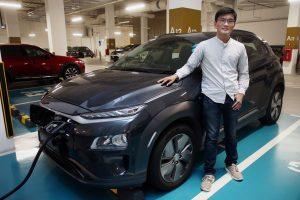
Like a growing number of Singaporeans, driving an EV is no longer a concept that Mr Koh is just experimenting with.
As one of those who had placed a S$150 deposit to order a Tesla Model 3 the moment the United States carmaker’s Singapore sales portal went live earlier this month, Mr Koh said he now has no doubts about the feasibility of owning one, even as a HDB dweller.
Likewise, for software engineer Justin Lee, 39, who had been wanting to buy an EV for some time, the bigger missing pieces have fallen into place and he can now see himself getting an EV in the next two years.
The management at his condominium, Caribbean at Keppel Bay, has recently passed a resolution at an Annual General Meeting to allow the installation of EV charging points.
A downside is that many of the existing processes and procedures — emissions test, road tax calculation and annual inspection process — are still rather centric to combustion cars, he noted.
REVIVAL OF AN ELECTRIC DREAM
EVs have emerged as the darling of green transportation around the world and been touted as transportation’s answer to reducing climate change emissions.
It was only in recent years, however, that strides have been made in design issues that had previously rendered EVs impractical for mass commercialisation.
For more than a decade, the Government had been adopting a start-stop approach to the mass adoption of electromobility here — leaving prospective EV buyers and industry players unsure as to whether EVs have a future in Singapore.
As early as in 2009, the Government had convened a task force involving eight government agencies to study the deployment and proliferation of EVs in Singapore amid a flurry of activity among industry players, including a number of local start-ups, vying for a piece of the pie.
For instance, there was former Singapore Armed Forces mechanic Clarence Tan, now, 38, who had invested S$250,000 to set up The Green Car Company in 2008, with a dream to manufacture 2,500 two-seater EVs a year out of a workshop the size of a three-room HDB flat.
There was also the late Mr Lim Kian Wee, then 36, who reportedly quit his S$200,000-a-year engineering job, liquidated his investments and took out his retirement savings to start green technology firm Ample, which aims to develop an EV with a range of 900km per charge.
But as it turned out, the two entrepreneurs were ahead of their time. Their ventures did not take off.
It was only in February last year that Singapore announced that it would be — in the words of Deputy Prime Minister Heng Swee Keat as he unveiled the 2020 Budget — “placing a significant bet on EVs and leaning policy in that direction because it is the most promising (cleaner vehicle) technology”.
Mr Heng said the country would roll out 28,000 charging points at public car parks islandwide by 2030, with an eye to phasing out all petrol and diesel cars by 2040.
He also announced an EV early adoption incentive to narrow the upfront cost difference between an EV and an equivalent internal combustion engine (ICE) vehicle by up to S$20,000.
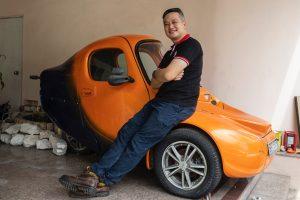
The push towards EVs has gathered speed since then, with the unveiling of the Singapore Green Plan 2030 on Feb 10 this year, which sets new goals for all car registrations to be cleaner-energy models from 2030, and 60,000 charging points to be built by the same year — more than double the original target.
Presenting Budget 2021 on Feb 16, Mr Heng, who is also the Finance Minister, announced that the Government will further waive the minimum Additional Registration Fee of S$5,000 for EVs, and commit S$30 million over the next five years for EV-related initiatives, such as measures to improve charging provision at private premises.
The slew of EV-friendly measures stands in stark contrast to claims made by Tesla Chief Executive Officer Elon Musk not too long ago. In a May 2018 tweet, he had criticised the Singapore Government for being unsupportive of EVs. And in January 2019, he said the country “has been unwelcome” to the electric car giant.
Mr Masagos Zulkifli, then Environment and Water Resources Minister, famously hit back in an interview with international news agency Bloomberg in August 2019, saying that Tesla’s EVs are about “lifestyle”, not climate.
“We are not interested in a lifestyle. We are interested in proper solutions that will address climate problems,” Mr Masagos had said then, as he pointed out that it would be difficult to develop enough charging stations with 85 per cent of Singapore’s population living in HDB flats.
“Just choosing a parking spot is already problematic. And now you want to say who gets the charging point. We do not have the solution yet,” added Mr Masagos, who is now Minister for Social and Family Development.
The minister also said then that hydrogen fuel cell technology was a better long-term solution than EVs, partly due to the carbon footprint from mining the metals needed to produce car batteries and the issues related to their eventual disposal.
Earlier in 2016, there was another high-profile EV incident, where a S$15,000 carbon surcharge was slapped on a used Tesla Model S sedan.
In justifying the levy on the EV — which its owner Joe Nguyen believes, even now, to be the “only electric car in the world that got penalised for emissions” — the Land Transport Authority (LTA) had pointed out then that electric cars “are not carbon emissions free”.
It added: “They may not produce emissions from the tailpipe like conventional cars, but they take electrical power from the national power grid which has to burn fuel to produce the electricity, and in the process produces carbon emissions.”
The perceived official ambivalence towards EVs had held car dealers back from bringing in more models and charging infrastructure firms from building more charging points, and pushed interested EV buyers to look for alternatives as they were not seeing enough chargers out there or models to choose from.
While many have welcomed the latest moves on the EV front, a representative from Tan Chong Motor Sales, the official distributor for Nissan in Singapore, told TODAY that the Government still has to do more to get the momentum going.
For one, there isn’t yet a mandate to review the government procurement criteria to favour cleaner energy vehicles, despite having set a target of 2030 to move away from pure ICE vehicles, said Mr Ron Lim, Tan Chong’s head of sales and marketing.
“Government procurement agencies currently qualify vehicles based on ICE capacity and cost, which is a disadvantage for hybrids and EVs,” he explained. “Certain ICE vehicles still fall within the A2 band of the Vehicular Emission Scheme, allowing them to be more affordable than a hybrid or EV, hence having the upper hand in the procurement process.”
The public may view this as “contradictory to what it (the Government) is preaching”, Mr Lim said. “If the Government can take the lead and set the example, then the public’s confidence in hybrids and EVs will grow.”
As of end-January, Singapore’s EV population was 1,274, or 0.2 per cent of the total car population of 636,483.
Mr Claudius Steinhoff, president and CEO of Mercedes-Benz Singapore, reiterated that carmakers will explore all possibilities to reduce emissions quickly and sustainably — in tandem with the growth of infrastructure needed to support the growth of these new drivetrain and propulsion solutions.
“This is why Mercedes-Benz as a whole is primarily concerned with keeping our portfolio — figuratively speaking — in balance,” he told TODAY. “Our group-wide strategy consists of three parallel tracks on the way to zero-emission mobility, ranging from electrified 48V internal combustion engines to plug-in hybrids and all-electric models with batteries and fuel cells.”

ADVANCEMENTS IN BATTERY TECH THE KEY
The case for EVs had only strengthened over the past decade, and there was never the sense that EVs would die a natural death, said Mr Terence Siew, president of the Electric Vehicle Association of Singapore, who was involved in EV charging product development for 10 years.
“Batteries have become bigger. The vehicles can travel further, but they come cheaper and more affordable,” said Mr Siew.
“The only way where EVs would fail is when people don’t see a need to switch over. But in the automotive world, the EV happened to lie at the heart of four megatrends – efficiency, connectivity, autonomous driving, shared mobility.”
Tan Chong’s Mr Lim said: “There was the sense that it was the way forward, not if, but when.”
So why is Singapore betting big on electric vehicles only now? What is the impetus for kicking its electrification plans into high gear?
Cost is one factor, with energy and transport experts pointing out that the cost of batteries has been falling rapidly to a point where mass market EVs will be competitive with ICE vehicles without subsidy.
Professor Subodh Mhaisalkar, executive director of the Energy Research Institute (ERI@N) at Nanyang Technological University (NTU), said that the tipping point would be when a car battery costs under US$5,000 (S$6,587) to US$10,000 (S$13,173) per vehicle.
And it is already forecast to happen by 2025, so the accompanying infrastructure for EV charging will need to keep up, he said.
Dr Walter Theseira, associate professor of economics at the Singapore University of Social Sciences (SUSS), observed that the cost of lithium-ion batteries for EVs has fallen way below what was projected in Singapore’s electromobility road map, which was published in 2016.
Referring to the road map, developed by ERI@N on LTA’s lead to guide the formulation of EV policies and its related infrastructure plans, he said that it projected the cost of batteries to fall to about US$300 per kilowatt-hour (kWh) last year.
But current estimates suggest battery prices may fall to around US$100 per kWh in the next few years, noted Dr Theseira, who heads the Master of Management (Urban Transportation) Programme at SUSS.
Bloomberg reported last December that the average price per kWh was at US$137 (S$182), he noted. In 2011, the cost of an automotive lithium-ion battery pack was about S$1,240 per kWh.
Professor Choo Fook Hoong, co-director of ERI@N, also cited the battery as holding the EV back, but added that its technology has continued to evolve, such as with solid-state batteries.
For instance, Toyota announced in December last year that it had developed a solid-state battery that would only take 10 minutes to recharge from zero to full, and can travel 500km on one charge.
As for hydrogen fuel cell technology, Professor Chan Siew Hwa, who leads hydrogen and fuel cell research at NTU, said the technology is currently more suitable for heavy duty vehicles such as trucks, aircrafts and ship propulsions, which would require longer range and fast refuelling times.
Limitations for mass commercialisation of hydrogen fuel cells as a source of power for vehicles include the lack of supporting infrastructure and supply of “green” hydrogen (which is produced using renewable energy sources such as wind or solar power).
Mr Christopher Wehner, managing director of BMW Group Asia, the regional arm of German motor vehicle manufacturer BMW, affirmed that the technology for hydrogen fuel cells is still in its early stages, and is “not yet commercially viable for passenger cars”.
He added that green hydrogen is also not yet available in sufficient quantities and at competitive prices on a global level for a commercial rollout.
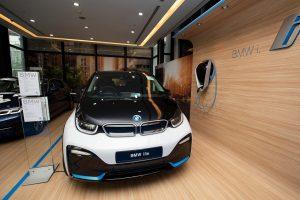
Agreeing, Prof Subodh said: “We already have the electric grid – as soon as you have the EV, we’re in business. For hydrogen, the cost and supply issues are not yet solved.”
EMERGENCE OF SMART CHARGING TECHNOLOGIES
As most EVs are sold with the assumption that the owner will have access to a dedicated charging point at home or work, the drive to promote such cars faces another speed bump: How to adapt public car parks in Singapore, where most of its people live in flats, without overtaxing its electrical grid?
Intelligent charging systems — which are already in existence — can offer a way out, said Dr Sanjay Kuttan, council member and chair of the sustainable infrastructure committee at the Sustainable Energy Association of Singapore.
“One solution is to use smart technology that allows 20 cars to be charged overnight but in batches of four at a time before it alternates to another four, and cycle the way through the night especially if the cars are going to be there till morning,” he said.
Ms Sylvie Ouziel, the international president for technology solutions provider Envision Digital, told TODAY that her firm has been working on solving the issue of how car drivers can “naturally” charge where they work or live without having to look for a fast-charging spot.
Most cars sit idle 95 per cent of the time and do not require fast-charging, which creates congestion points for the grid and damages battery health, she said.
Thus, a solution lies in orchestrating artificial intelligence of things to create “digital virtual electric grid expansion”.
The virtual expansion can be done, for example, by sequencing which car to charge based on driving range needs, expected or declared time of departure and the current state of charge of the battery, she said.
“Smooth slow charging, coupled with smart prioritisation, will overall balance the full electric demand of a building or a campus, along with solutions to buffer electricity for later use,” Ms Ouziel said.
The buffering of electricity — which can be done by tapping vehicle-to-grid solutions that use car batteries to reinject electricity into the network during times of peak demand or solar energy — can complement this system, she said.
The vehicle-to-grid solution could find its way to Singapore sooner than later as SP Group, which aims to build the largest public EV charging network here, is already piloting it.
Its CEO, Mr Stanley Huang, told TODAY that it is part of the company’s plans to address grid reliability with EV adoption.
Mr Siddhant Gupta, the Singapore-based head of future grid for Asia Pacific at solutions provider Siemens, said his firm has worked with the Westminster City Council in the United Kingdom and EV charging company ubitricity to convert 24 lampposts into charging points along Sutherland Avenue in London.
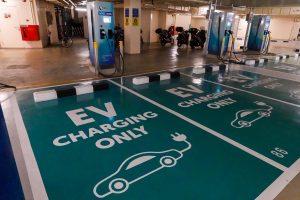
CAN S’PORE MEET ITS TARGETS?
Going by the scenarios envisaged by the ERI@N’s electromobility road map, Singapore’s move to ramp up charging infrastructure to 60,000 charging points by 2030 could mean that Singapore is gearing up for a “high” electrification target, said Prof Subodh.
The target set in the road map is for full EVs to make up 50 per cent of private vehicles, 60 per cent of taxis, 100 per cent of public buses, 50 per cent of private buses, 50 per cent of freight vehicles, 70 per cent of motorcycles and scooters, and 100 per cent of car-sharing vehicles by 2050.
But just how realistic is the goal to roll out 60,000 charging points in less than a decade?
When asked about this by the media on Feb 11, Transport Minister Ong Ye Kung said 60,000 is “very achievable” and there is a good chance that it can even be higher, as the number does not fully take into account those to be built at private premises.
“Technology is moving so fast,” he added.
Experts and charging infrastructure providers said the most urgent piece in the EV puzzle that has to be put in place would be the upgrading of power at the distribution point level.
TODAY understands that should there be a need to add more transmission cables, the infrastructure is already there as S$2.4 billion was invested to build a 40km network of underground cable tunnel system — one of the deepest in the world at 20 storeys underground.
SP Group had said when it was completed in 2017 that parts of the existing power grid, which runs 3m underground, would be shifted to the deep tunnels progressively from end-2018 till 2022.
But Prof Subodh said there shouldn’t be a need for more transmission cables in the short run. The upgrading of surface-level infrastructure, such as substations and transformers, would be sufficient.
“We have the most stable grid in the world. For the most part, we have installed more capacity than what is needed,” he said.
The upgrading works could be planned with the renewal of electrical substations, which sometimes have lifetimes of about 30 years, and it could also be combined with other efforts such as the estate upgrading and the installation of additional solar panels, he said.
Giving a sense of the amount of work that has to be done, Mr Franck Vitte, managing director of car-sharing firm BlueSG, told TODAY that about 50 per cent of spaces that they had selected to build a station with four slow 3.7kW AC charging points were rejected by the authorities.
BlueSG currently runs a fleet of 672 EVs under an LTA trial and has more than 1,500 charging points islandwide.
The reason given was that there wasn’t enough available power that can be tapped from the switch rooms — which also cater for the running of lifts, car park barriers and lights — to support a 14.8kW charging station, he pointed out. Such switch rooms tend to be in older estates.
And judging from his firm’s experience, more than half of the public car parks here would not be able to support even one moderately fast charging pod requiring 25kW, Mr Vitte added. Currently available DC fast chargers require an input of 50kW to 60kW.
“There is a need for upgrading power at the distribution point level,” he said.

CHARGING AT HDB CAR PARKS
In imagining the future HDB car park, experts noted that car manufacturers may be tempted to build smaller battery capacity EVs for a mass market budget, since high capacity EVs with ranges exceeding 400km are much more expensive due to battery costs.
Dr Theseira said that if this happens, it “won’t make sense at all” even if 10 per cent of the parking lots are installed with chargers, as the smaller capacity EVs’ usage model would require daily charging.
“In these cases, you’ll have a pretty unpleasant game of musical chairs every evening as owners shuffle their cars around,” he said. This is because he expects charging points at HDB and condos to be unused during the daytime, and over-utilised at night on a typical workday.
“I don’t actually think we have seriously considered the huge difference to infrastructure and quality of life that higher battery range would make in Singapore, even though daily driving distances are short.”
The Government will be collecting data, such as charging durations and state-of-charge at the start and end of each session, according to documents of its first tender to build more than 600 EV charging points at over 200 public car parks by the third quarter of 2022.
The tender, which was called in November last year and will be open till March 12, will also track energy consumption patterns, such as the peak arrival and departure times and the grid impact during different times of the day.
Some 390 of these chargers will be 7kW AC ones, to be built across 130 HDB car parks.
The rest — to be built at industrial estates, public parks and community centres — will support 22kW AC charging at the minimum, and come with two to four charge points at each location.
Dr Kuttan said the answer could be in simply implementing a smarter business model that would discourage hoarding of charging lots, such as allowing only a 30-minute grace period after a full charge before you would have to pay for each 15-minute block the car remains plugged in.
Dr Theseira suggested cheaper rates for those charging at off-peak periods.
Ms Larissa Tan, 46, chief executive officer of local EV start-up Vanda Electrics, said slow charging may not be the best solution for Singapore, and suggested that petrol stations be transformed into battery swapping stations, where cars can exchange spent batteries for fully-charged ones quickly.
This would take better consideration of the existing habits of drivers who are used to taking only five to 10 minutes to top up their petrol, not 30 minutes to a few hours, she said. “It does not require a lifestyle change. Swapping batteries is akin to basically filling your petrol.”
However, Mr Siew said battery swapping will not work for now, pointing out that cars manufacturers currently design their batteries to fit the design of their cars.
“If you cannot have the industry agreement to use the same battery, then how are you going to do swapping because you will need 100 models of every battery at a location. That in itself is very costly,” he said.
Besides, an EV battery can easily weigh 500kg, making it logistically difficult to move around and costly to extract, he pointed out.
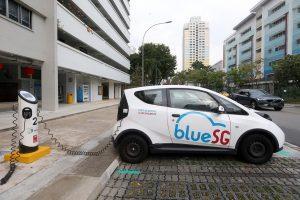
Ms Aarti Nagarajan, general manager of Shell Mobility Singapore, said that Singapore needs to develop a “wide charging network that allows drivers to not only charge their vehicles where they live, work and play, but also when they are on the go without disrupting their journeys”.
Shell expanded its network of service stations offering an “on-the-go rapid EV charging service” from 10 to 18 in December last year — covering about 30 per cent of Shell’s total number of stations islandwide.
By 2030, Shell aims to host an extensive network of charging options, Ms Nagarajan said.
‘CAR-LITE’ STILL ULTIMATE AIM
Even as Singapore incentivises the adoption of EVs, industry players recognised that there is still a need to balance enthusiasm for these cleaner vehicles with the Government’s car-lite policy, where heavy investment on public transport is coupled with a zero-growth target for private vehicles.
What could set back a quicker adoption of EVs is a lump-sum tax that will be built into EV drivers’ road tax schedule to partly account for a loss in fuel excise duties, which contributes around S$1 billion a year to tax coffers.
In Budget 2021, DPM Heng said that the road tax treatment for EVs will be adjusted such that a mass-market electric car will pay road tax comparable to an ICE equivalent.
Tan Chong Motor’s Mr Lim said that until the revised road tax structure is finalised, it is hard to predict the adoption rate of EVs.
“For now, EVs are taxed based on power output and technology advances – power and range increases – this might not be great news for EVs.”
Dr Theseira noted that as EV gains popularity here, the Government will have to look closely at the tax structure to ensure that motorists pay the same taxes for driving, whether they use EVs or ICE vehicles, after accounting for EVs’ environmental benefits.
“Experience from other markets shows that it’s unnecessary to ‘force’ the market to buy a minimum number of EVs. Once price parity, after tax or costs, is reached, the market can tip over very quickly,” he added.
Mr Clarence Tan, the founder of the now-defunct The Green Car Company, believes that when EVs become mainstream, they will “just be as expensive as any other car on the road”.
“The bottomline is, (the policymakers) don’t want you to own any cars, regardless of how it is powered,” he added.
Source: todayonline
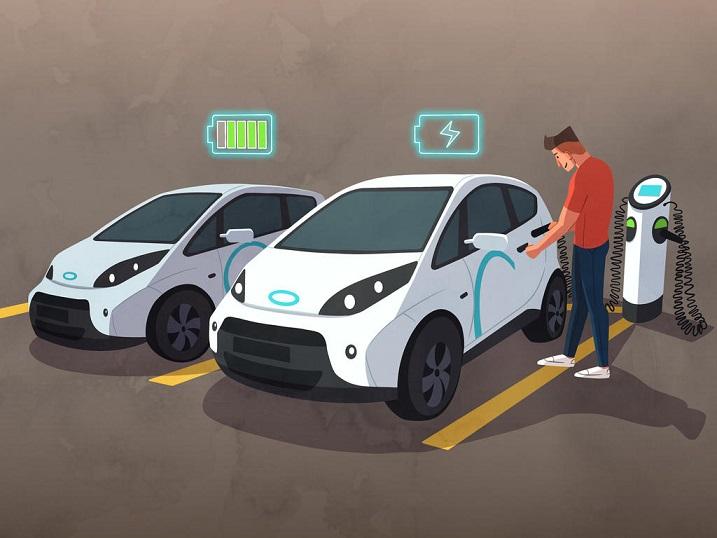
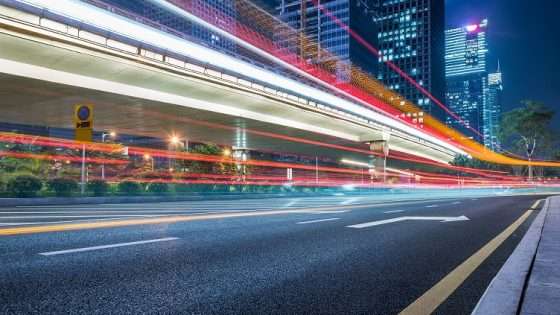
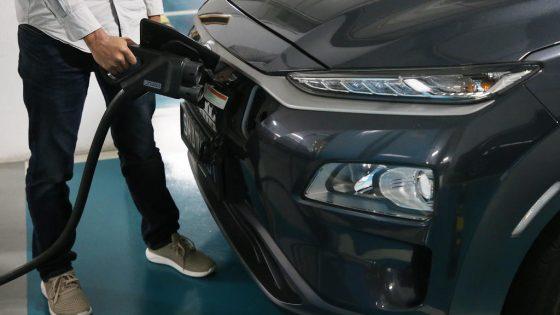
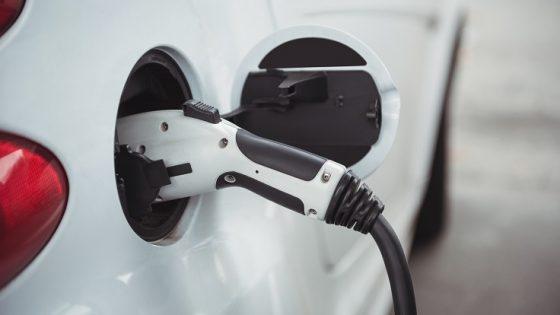
Leave a Reply